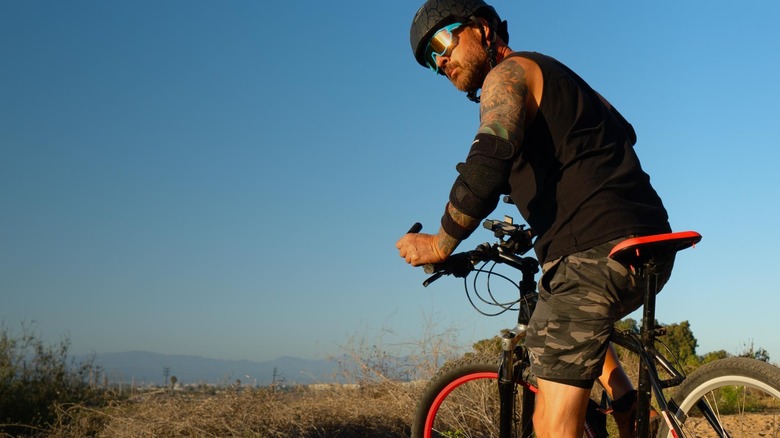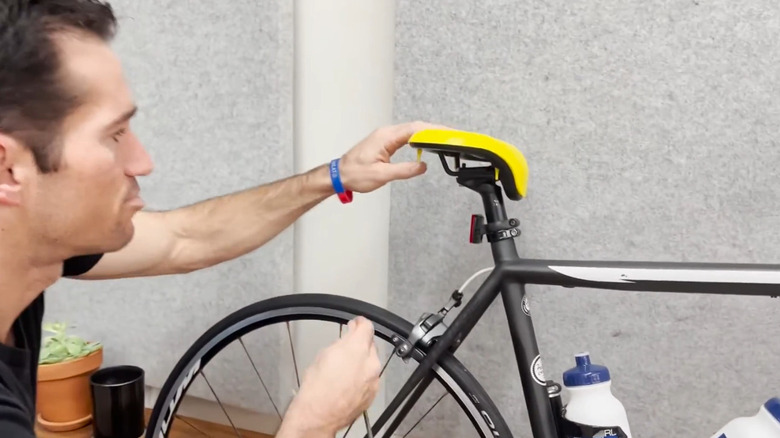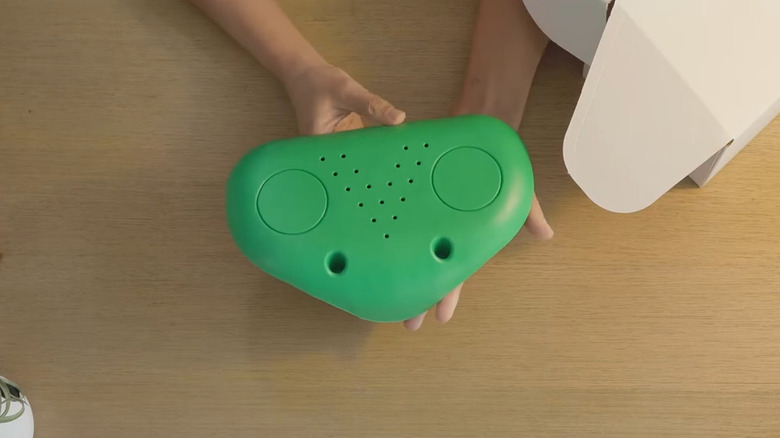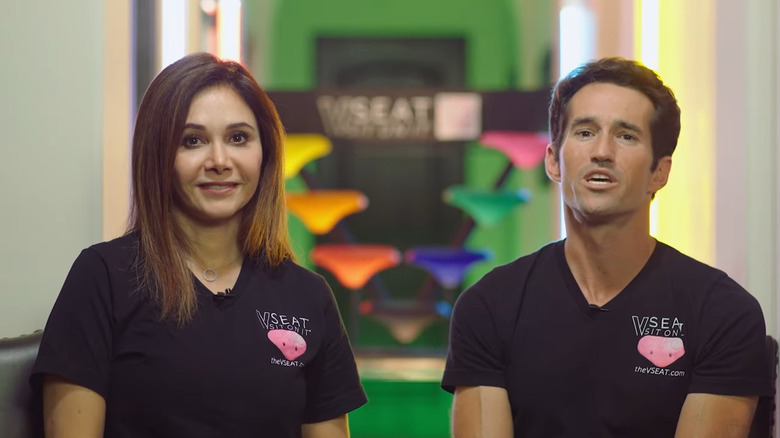What Happened To The VSEAT Bicycle Seat From Shark Tank Season 15?
Bike riding can't be a relaxing experience if your butt doesn't stop hurting. That was the premise behind the VSEAT, which appeared on "Shark Tank" in Season 15 Episode 20. Ani Armstrong and Bryan Visintin were on a mission to create a noseless bicycle seat that was wider and flatter, putting less pressure on nerves and arteries in that sensitive area. The gel-like coating over its metal frame also increased comfort on longer rides.
At the start of the pitch, Visintin complained of "saddle soreness" as he hopped off a bike with a traditional seat, even while wearing padded bicycle shorts. Kevin O'Leary, a harsh and honest Shark who has invested in BenjiLock and Tabby dating app, volunteered to ride on the VSEAT as an avid biker. Barbara Corcoran joined him, both of them agreeing that they felt comfortable and supported. But was that enough to get the VSeat a deal, and what are the investors up to now?
What happened to VSeat on Shark Tank?
Armstrong and Visintin came into "Shark Tank" asking for $150,000 or 5% equity, a $3 million evaluation. When asked for the numbers to back up this high evaluation, the two investors said they'd sold over $300,000 worth of product — the VSEAT sells for $119 and costs $24 to manufacture and distribute. A lot of their sales happened after they started advertising on Facebook and Instagram.
While the numbers weren't too shabby, O'Leary said he was concerned about them being in the retrofit market. To this, Mark Cuban wondered if they should find bicycle manufacturers to license the seat to, which Armstrong and Visintin were open to. Unfortunately, Cuban was not interested; partnering with Guardian Bikes gave him firsthand experience dealing with bike companies and their low margins.
At this point, O'Leary offered $150,000 for 15% equity. Robert Herjavec seemed to think this offer was fair, saying he'd do the same. Lori Greiner and Corcoran joined Cuban, saying they weren't interested in VSEAT, leaving it to O'Leary and Herjavec to fight over. Visintin asked if they'd do 25% equity for double the money, but this was turned down. The final offer was $200,000 for 25% equity to get both O'Leary and Herjavec, which was accepted by both parties.
What happened to VSEAT after Shark Tank?
After appearing on "Shark Tank," the two entrepreneurs behind VSEAT posted a short video on Instagram that claimed they were getting a big influx of orders. Armstrong said: "So now it's been a week since our 'Shark Tank' episode and we have been super, super busy for the past week. Thank you everybody for your support and for your orders and or your questions."
VSEAT is still around to add to your list of must-have cycling gadgets. In fact, the website shows them selling one single product — the VSEAT itself. It's selling for $119 and comes in nine color options. It boasts that it's still made in America and has a patent for its medically researched design. The reviews seem to be largely positive.
Visintin told the Santa Monica Daily Press about their time on "Shark Tank": "It really is like you're going in pitching a product to investors, and that's awesome, especially for people who might not feel comfortable on TV. [...] When we actually got in the shark tank and had our ability to pitch, for us, it was fun [...] because we were prepared and we know our product so well, that it was more like a fun kind of conversation."
What's next for VSEAT and its founders?
VSEAT appears to be going strong in 2025, with a website focused on its single product. There's no word on if another product will be added to the VSEAT lineup but it's clear that the two founders are still very focused on the company. On LinkedIn, Armstrong has VSEAT listed as her most recent career move and even shared a post about appearing on "Shark Tank."
While VSEAT wasn't on "Shark Tank" until 2024, it was founded in 2017. It came from Armstrong's discomfort while biking, particularly her "lady bits." She discussed this with Visintin, a trainer who was shocked to hear just how bad biking felt for her and other women. As the two realized more and more that this was a common complaint, they got to work designing a new seat, including plenty of research and testing.
Armstrong wasn't always an avid cyclist living the California dream. She was adopted at three years old in Iran, where she was almost jailed at just 12 years old when a strand of hair was seen coming out of her hijab. Luckily, her adoptive mom begged for her to be spared. After that incident, the family moved to the United States, where Armstrong pursued chemistry in college. She was initially working in the pharmacy industry on medical devices but felt she was meant to do more to help people. Enter VSEAT, which is still her focus now.



